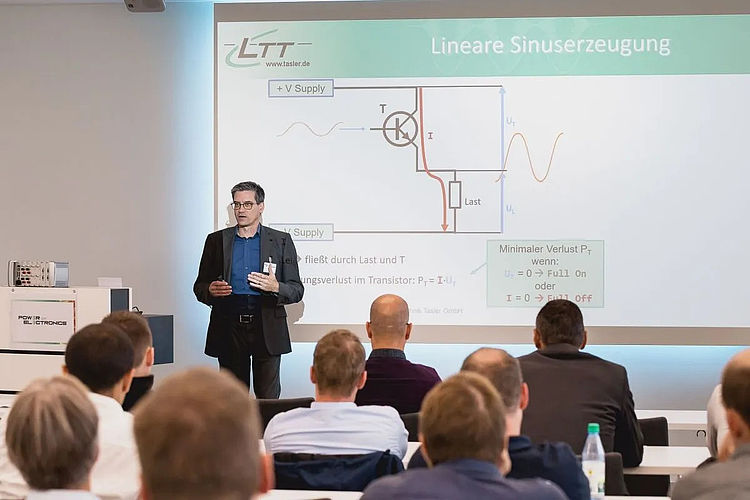Our expert Michael Tasler gave a very exciting presentation on the challenges of electrical power measurement on inverters at the Power of Electronics.
If you missed it, that's no problem!
We have summarized it here for you so that you can read it at any time.
Typical areas of application for inverters are the conversion of solar power into alternating current for feeding into the grid or the alternating current drive of electric motors. Both areas of application require strict testing of the efficiency of the inverters, and relevant standards such as DIN IEC 60034-2-3 set stringent quality requirements for the underlying electrical power measurement with total measurement errors of less than 0.3%. This can only be achieved if crucial details are taken into account. For example, losses during the fast ON/OFF PWM pulse sequences in modern inverters mainly occur in the steep edges during switching. This places enormous demands on the power analyzers to be used: The amplitude of the frequency components that occur decreases with frequency. If you want to capture as many of these frequency components as possible over a broadband range, the amplitude resolution must be sufficient to resolve both the large low-frequency signals and the small high-frequency signals in equal measure.
In his presentation, Michael Tasler explains these and many other requirements that power measurement devices for inverters have to meet, such as low noise floor and distortion, shows the influence of the equipment used, such as cables, current clamps, current transformers and voltage supplies, outlines possible solutions and presents the appropriate power analyzer.

